The Casting Process
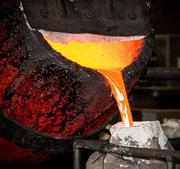
The Art of Lost Wax
Lost wax casting has been around for thousands of years, yet few people understand how the process actually works.
Although mechanization has facilitated the lost wax process of bronze casting, the procedure is basically the same as that used by the Chinese when they first developed the process in the 2nd millennium BC.
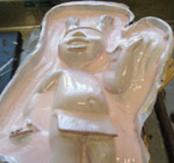
The Rubber Mold
First the artist creates an original sculpture out of any number of media, including stone, wax, clay, wood and pottery.
This image is coated with a silicone rubber molding material that makes two rubber mold halves (each rubber mold has a front and a back piece). A fiberglass outer shell is added to the back of each mold so it retains its shape and rigidity during subsequent uses.
These molds are the only components that are ever re-used in the casting process. All other components are re-created for each casting.
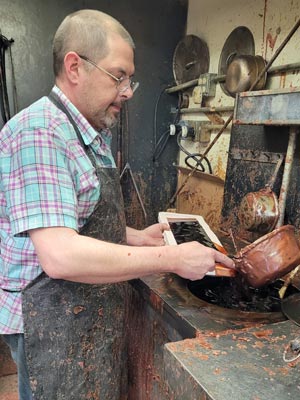
The Wax Positive
Once the molds are done, the insides are coated with layers of wax. The halves are then bound together and wax poured inside to complete the wax image being created.
Once the wax has cooled, the mold is peeled away, yielding a wax image (the wax positive”) duplicating the original sculpture.
This image must then be “touched -up” to remove any seam lines, scratches or other flaws, as well as to recreate any pattern or texturing that was lost or damaged when the wax was made.
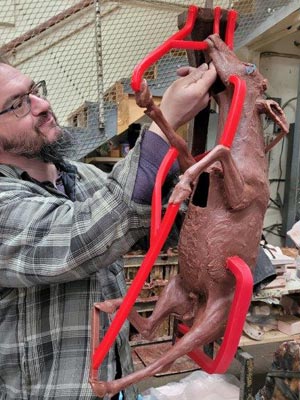
Gating
The next step, “gating”, is the application of a series of tubes and funnels that allow the molten bronze to flow through to the bottom of the ceramic shell and the hot gases to escape at the same time.
These sprus are created by attaching wax rods to the finished wax form at strategically spaced locations.
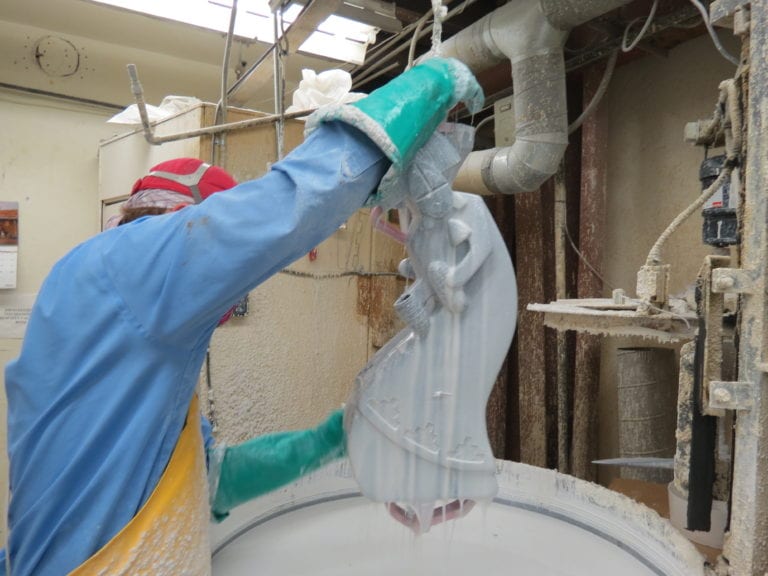
Ceramic Shell Casting
After the gating is completed each wax form is dipped in a liquid ceramic silica-sand compound so it is completely coated inside and out. Holes called “patches” have been cut into the wax to allow an entrance to the inside of the form.
The form is subsequently dipped 6 to 12 or more times over a period of several days until the desired shell thickness is achieved.

The Pour
Bronze ingots are melted to a temperature of approximately 2000°F and poured into the cured ceramic shells. As the sculpture cools the ceramic shell begins to pop away from the bronze.
This shell will be completely broken away, using a hammer and chisel, before the superfluous metal materials are cut away.
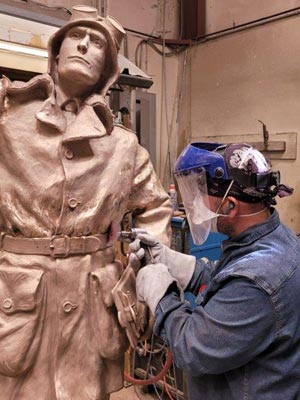
Bronze Chasing
The casting is then sandblasted in preparation for metal finishing. Any pieces of a sculpture that were cast separately are welded back onto the sculpture and any seam lines or other imperfections are removed or “chased”.
Finally, any texturing that was lost or damaged in the casting or welding process is recreated. The sculpture is then polished in preparation for application of the patina.
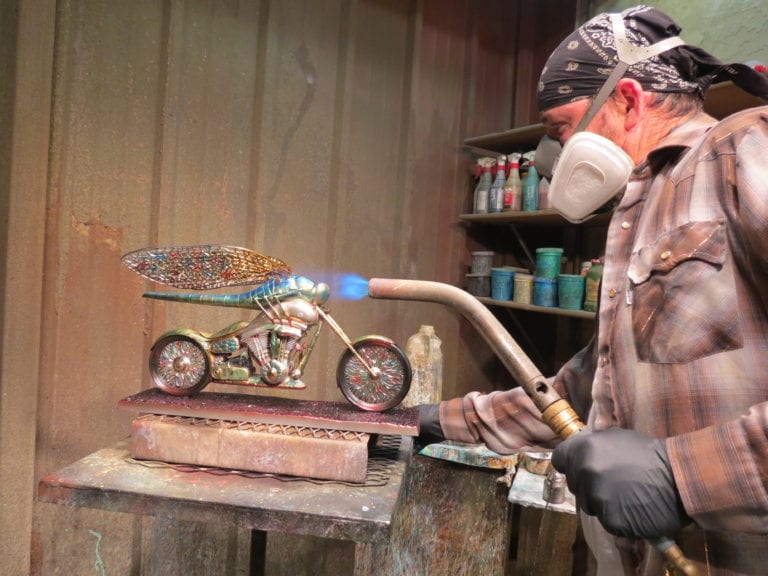
Patinas
The different colored finishes that are possible on cast bronze sculptures are called ‘patinas’.
The various colors, patterns and textures obtained in the patina process are achieved through a combined application of chemicals and heat, augmented by hand stippling, or spraying with an air brush, and sealed with lacquer and waxes.
Limited Editions
Most bronzes are part of a "limited edition" containing a fixed number of castings. This edition number is decided by the artist, usually after the first piece has been cast, and individually stamped on each piece (i.e. 1/100) thus concluding the process of bronze sculpture production.
Enlargements & Reductions
Bronzesmith is able to facilitate the artist's creation on any size up to 20 feet tall. We have done many enlargements, both for public commissions and private collections.
